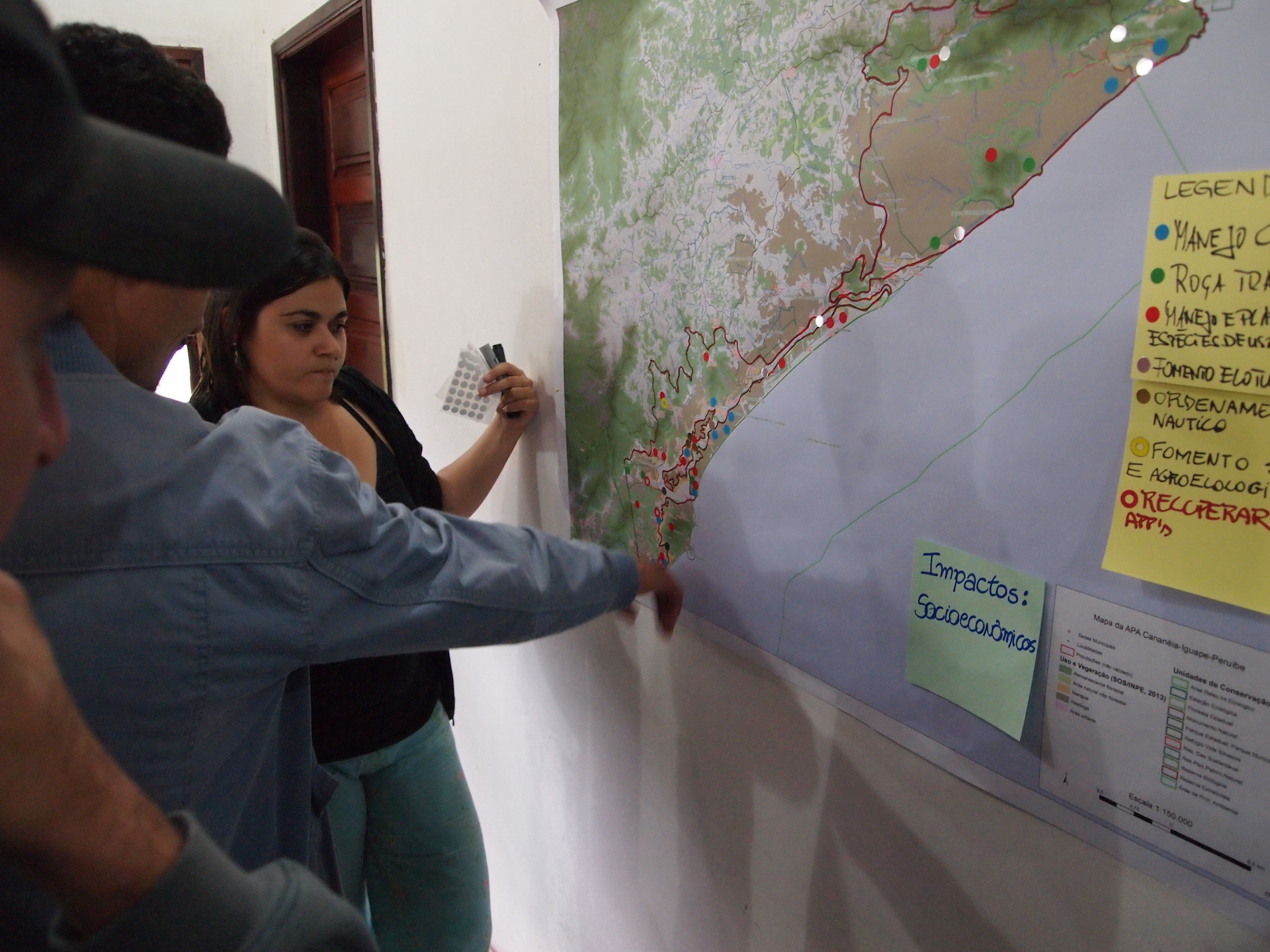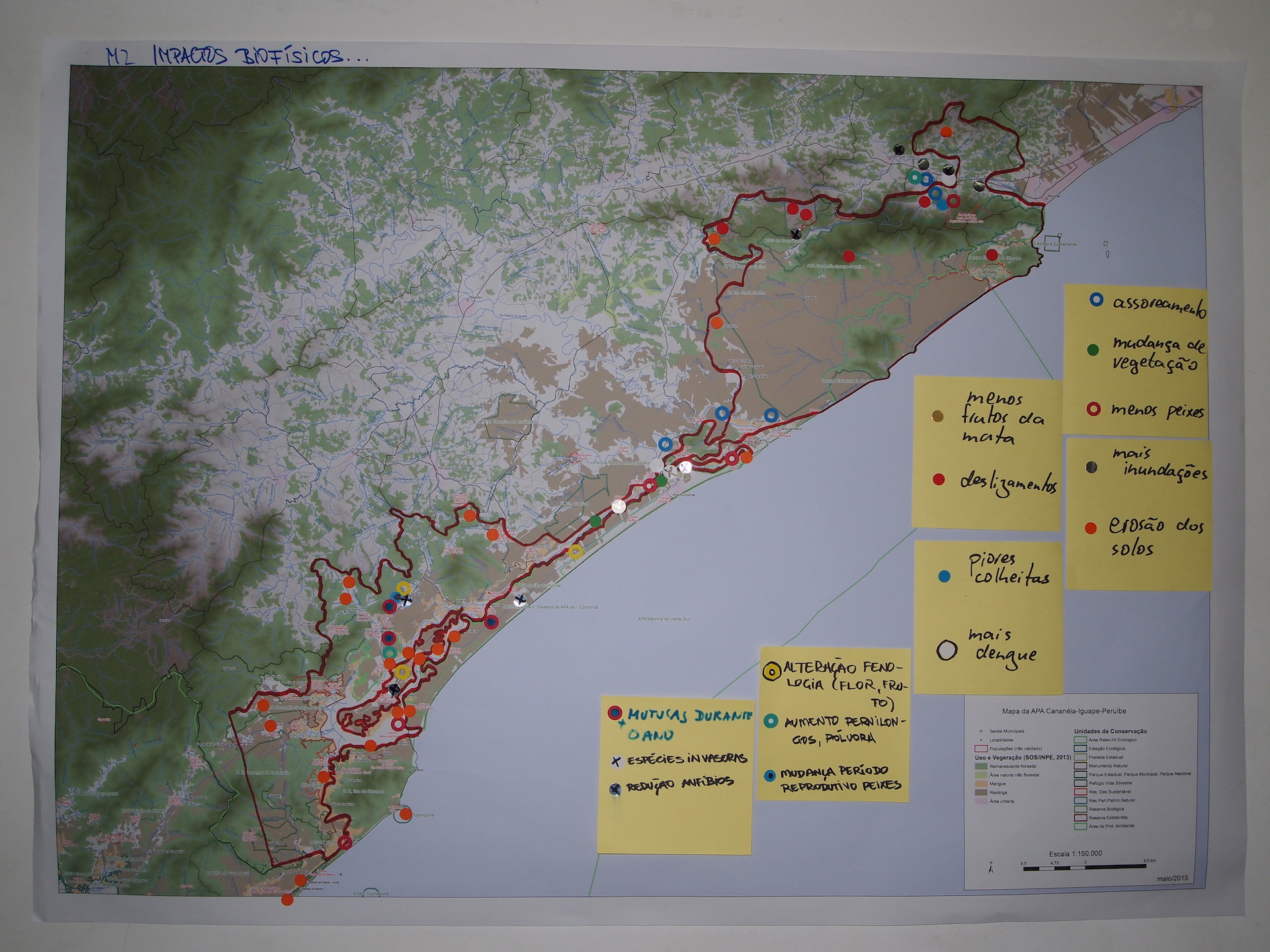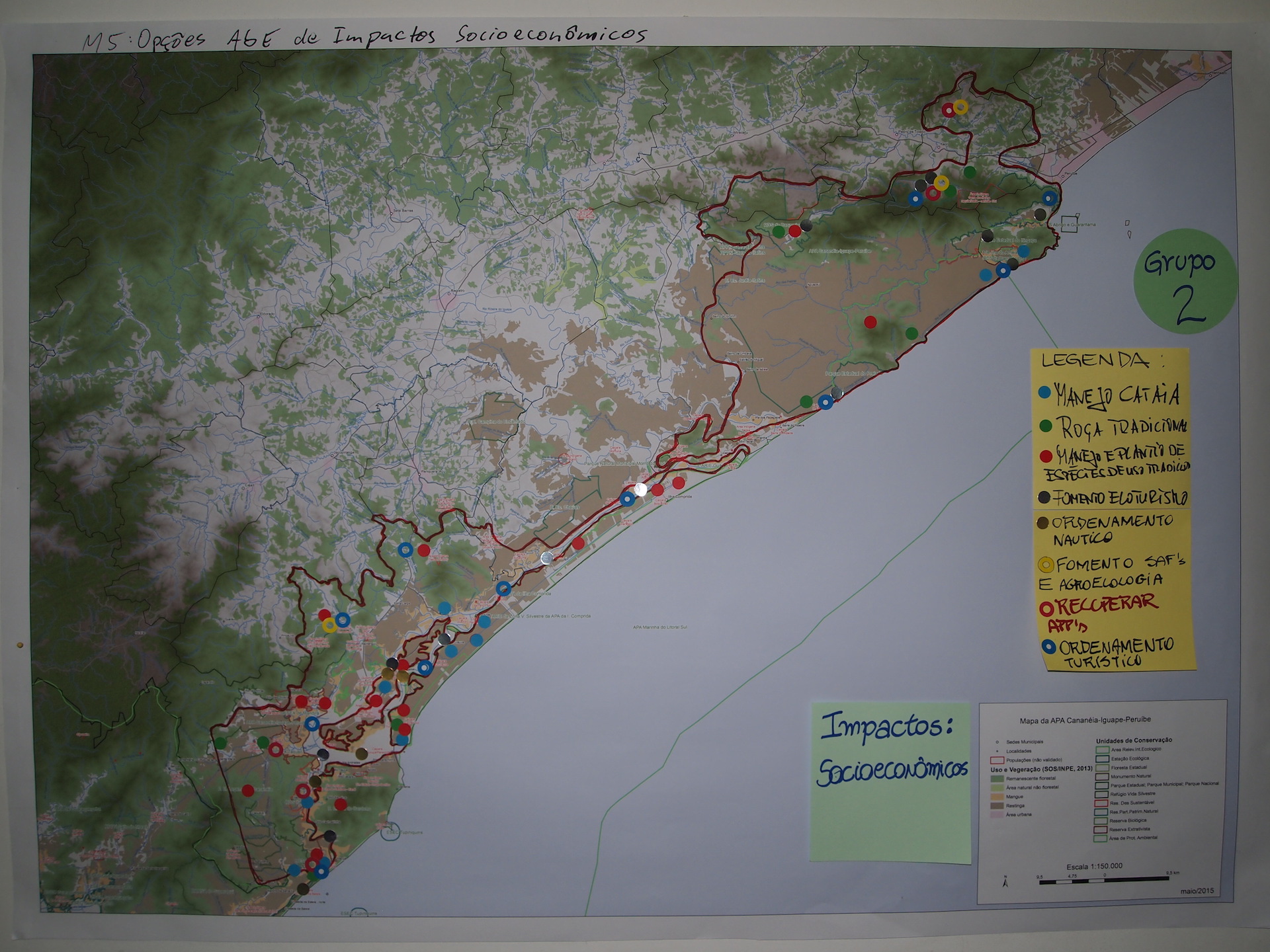Approche méthodologique pour l'intégration du changement climatique et des mesures d'EbA dans la planification de la gestion des zones protégées
Cartographie spatiale des impacts du changement climatique.
Mata Atlântica Project, GIZ Brazil
Cartographie spatiale des impacts du changement climatique.
Mata Atlântica Project, GIZ Brazil
Cartographie spatiale des impacts du changement climatique.
Mata Atlântica Project, GIZ Brazil
Approche méthodologique
GIZ
L'approche méthodologique comprend les étapes suivantes (voir aussi le graphique dans la galerie) :
- Collecte des perceptions des professionnels concernés et d'autres parties prenantes concernant les principaux risques climatiques et cartographie spatiale de ces risques.
- Identification des principaux impacts biophysiques et socio-économiques du changement climatique dans la région, en partie en vérifiant les perceptions des parties prenantes, en partie en s'appuyant sur des données scientifiques accessibles au public.
- Évaluation des services écosystémiques pertinents pour le bien-être humain et/ou l'adaptation au changement climatique avec les parties prenantes au cours d'un atelier.
- Définition d'options et de mesures d'adaptation spécifiques au site, y compris l'EbA.
- Intégration des résultats dans le plan de gestion.
- Le développement des capacités par le biais de cours et de formations en cours d'emploi est une mesure d'accompagnement essentielle.
- la disponibilité de connaissances et d'informations scientifiques et d'autres types et sources de connaissances et d'informations
- Participation et contribution du personnel technique et des citoyens.
- La première étape consistait à améliorer les connaissances des participants sur les concepts et les questions liés au changement climatique. À cet égard, le format dynamique et participatif des réunions et des ateliers a été crucial pour renforcer la compréhension des principaux concepts et l'appréciation et l'intégration des perspectives et des connaissances des parties prenantes dans le plan de gestion.
- L'évaluation des risques doit aller au-delà du site de conservation et porter sur l'ensemble de sa zone d'influence (par exemple, les bassins hydrographiques comme orientation pour le champ d'application).
- Les approches participatives et l'intégration des perceptions des impacts du changement climatique peuvent donner lieu à des points de vue divergents. L'équipe responsable doit être préparée à y faire face.
- De même, la collecte des connaissances et des perceptions locales peut nécessiter des ressources importantes et doit être bien préparée.
- L'intégration des risques liés au changement climatique et la mise en œuvre de mesures d'adaptation dans la gestion de la conservation est une tâche relativement nouvelle et complexe qui est influencée par des facteurs variant d'un site à l'autre. C'est pourquoi le processus d'adaptation doit être spécifique à chaque zone.




